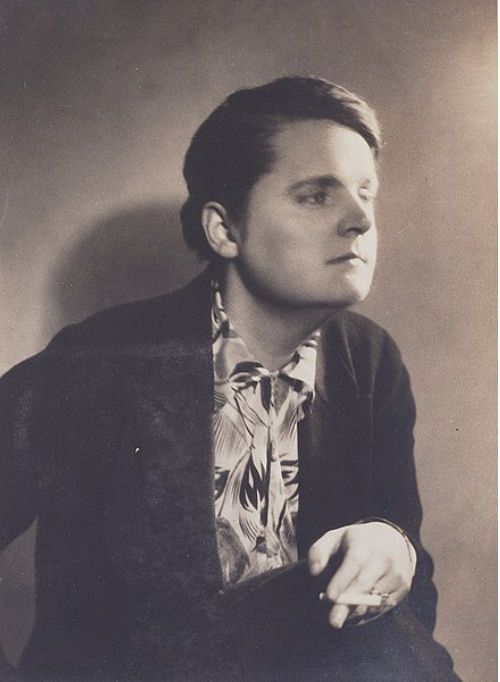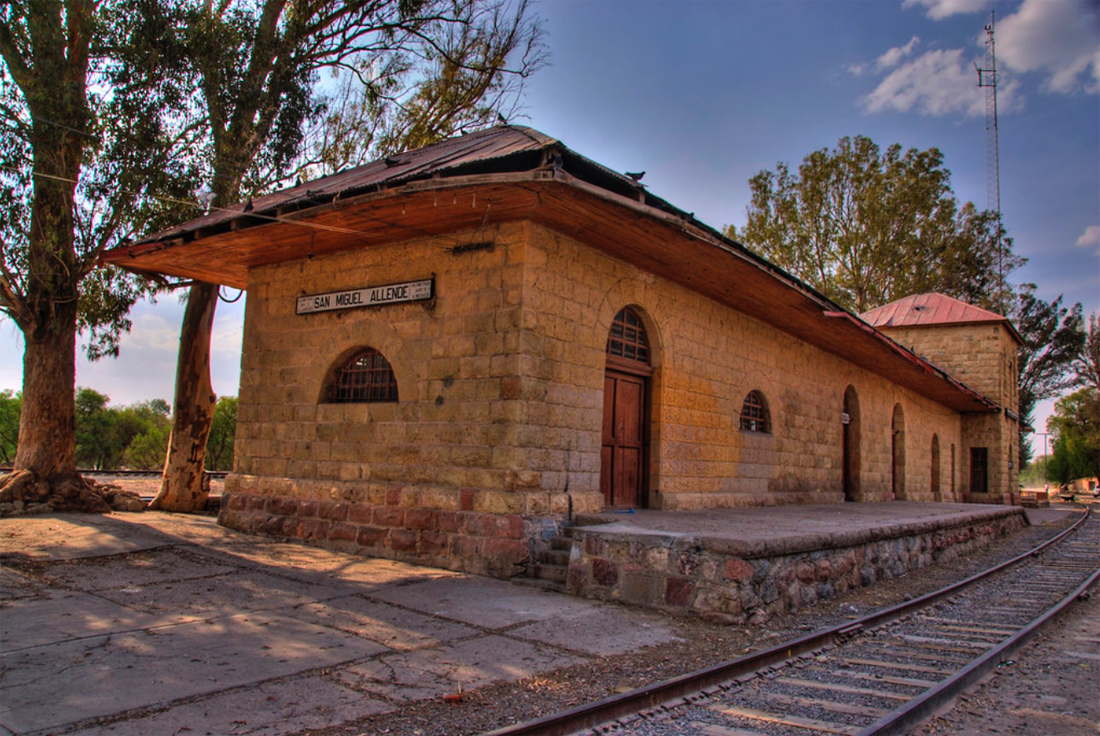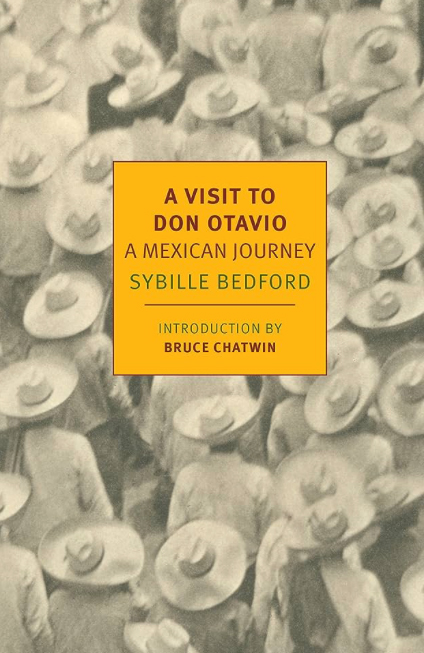
September 17, 2023
by Philip Gambone
Literary historian Drewey Wayne Gunn once estimated that American and British writers had published nearly 600 travel books about Mexico. In fact, he wrote, "almost every Mexican visitor seems to think about publishing his impressions." In the half-century since Gunn wrote those words, I'd guess another 600 volumes have come along.
Among that plethora of literary takes on Mexico, one of the most acclaimed is Sybille Bedford's The Sudden View: a Mexican Journey (1953). "When the history of modern prose in English comes to be written, Mrs. Bedford will have to appear in any list of its most dazzling practitioners," Bruce Chatwin wrote in his preface to a new edition of Bedford's book, retitled A Visit to Don Otavio.
Bedford was born in Berlin in 1911 to a Roman Catholic father and Jewish mother. Her childhood memories were of "an almost idyllic period," writes her biographer Selina Hastings, "living with her parents in a fine country house … romping with a large pack of good-natured dogs." When she was seven, Bedford's parents divorced. During her teenage years, she lived with her mother and stepfather in France, where she came to know writers like Thomas Mann, Bertolt Brecht, and Aldous Huxley. In her twenties, she wrote three novels imitative of Huxley, none of them published.

Huxley and Bedford
*
Because of her Jewish ancestry, her bank accounts were frozen by the Nazis and renewing her passport became difficult. The Huxley's proposed she enter into a marriage of convenience in order to gain British citizenship. In exchange for £100, she arranged to marry Walter Bedford, a British homosexual who was working as an attendant at a gentleman's club. The scheme was discovered and Sybille was threatened with deportation. A last-minute plea to the Home Office by a friend brought a reprieve. The two were married, attended a cocktail party thrown by the Huxleys, then went out to dinner and a variety show. Sybille had her new British passport; she never saw Mr. Bedford again.
Soon afterward, Mrs. Bedford (she kept her married name right up to the end) moved to the United States. Six years later, when the War was over, she found she "had a great longing to move, to hear another language, eat new food; to be in a country with a long nasty history in the past and as little present history as possible."
But where? Argentina was "too new"; Brazil "too far." Guatemala "too modern" and Honduras "too British." She chose Peru, until she learned what an airline ticket would cost. Her travel agent offered train reservations to Mexico City. She and her female companion (in the book referred to only as "E."), promptly took up the offer.

Bedford's account of their trip from New York to Mexico is alone worth the price of the book, especially if, like me, you love train travel and long to have it restored in Mexico. (The railroad station in San Miguel, if you have not seen it, is definitely worth a visit.) Bedford and E.—Hastings tells us it was Esther Murphy, who was Sybille's lover for a few years—boarded at Grand Central Station. By the time the train made its way across Indiana—"wheat fields for hours"—they were longing for a drink, but the state was dry "in a particularly thorough-going manner." Not only could they not purchase alcohol, they couldn't even order a set-up, "soda-water and ice being suspected of one use only."
In St. Louis, they transferred to the Sunshine Special, the through train to Mexico City. Bedford's description of the dining car and its fare is hilarious: "decorated with machine-carved Spanish Renaissance woodwork of astonishing gloom and ugliness." The food—ordered "like a deaf-mute, by scribbling your unattainable wishes on a pad of paper"—is a "nondescript travesty of food served with quite imaginative disregard of what goes with what." (Gentle reader: if you don't find her imperiousness amusing, read no further. Bedford's haughty, snobbish style is not for you!)

San Miguel's train station
*
At Laredo, Bedford and her enamorada endured the "malevolent rigmarole" of Mexican Passport Control. And still there were thirty more hours of travel before they reached the capital. The trip took them through the vast and lonely terrain of Coahuila and slowly southward, into San Luís Potosí, where they caught "glimpses, too fragmentary, of churches and ruins."
Bedford was excited to have entered the Tierra Templada, the mild lands, a climate that she calls "celestial perfection." "It is here," she wrote, "that the known Mexico begins, the Mexico of the wonderful climate, the Mexico of history and archaeology, the traveller's Mexico." The countryside grew more and more lovely, "open and enriched." Oxen, mulberry trees, villages and churches—"pink and gold in an extraordinarily limpid light as though the windows of our carriage were cut in crystal."
At last, they arrived in Mexico City. Bedford's first impression was "immensely physical: Sun, Altitude, Movement, Smells, Noise." Everything was "agitated, crowded, spilling over." Making her way along the narrow pavements, "over mangoes and avocado pears," she found that "one faces what Cortez faced in the absolute five hundred years ago: the unknown."

Contending with this unknown and all sorts of more specific disadvantages—not knowing anyone, having little Spanish, short on money, and encumbered with too much luggage—Bedford and E. lucked upon a small hotel, "a colonial palace with a weather-beaten pink façade." It suited them to a tee, and all for thirty shillings a day (about 30 pesos at the time).
Bedford wrote that she saw herself as a traveler, not a tourist, by which I think she meant she wanted to experience the country more intimately, more intelligently. But there are times—many times, some readers may argue—when she could be churlish, impatient, and as irritated at the inconveniences she encountered as any run-of-the-mill tourist. She regretted that she "came too late upon this earth to enjoy the pleasures of the table at Edwardian house parties." Indeed, she could be quite sniffy, sending back, for instance, a bottle of Mexican wine, which she dismissed as "cheap ink dosed with prune juice and industrial alcohol, as harsh on the tongue as a carrot-grater."
During her eight-month sojourn in Mexico, Bedford frequently hobnobbed with ex-pats. At a tea party in Coyoacán—a European tea party to which no Mexicans had been invited—she was advised to travel the country by bus. "You'll stop at places you'd never get to see otherwise." And, added her informant, "always go first class. You just don't go second class bus." Bedford asked if there were any third-class buses. Her hosts looked at each other. "There are," they acknowledged. "You won't come across them."

"homemade peasant Gothic"
*
On the whole, Mexico City disenchanted her. The show pieces suggested in her Baedeker were "numbered and on the whole disappointing." And yet, despite "the haphazard, the absurd, the overblown," she nevertheless found much to see and admire. "No need, no point, to plan and rush," she continued, "only to stand, to stroll and stare; to connect." Here she must have had E. M. Forster's open-minded dictum "Only connect" in mind. Prejudices of every kind could be surmounted by finding common humanity.
After their stay in the capital, Bedford and E. embarked on outings: to Cuernavaca to see Maximillian's summer place; to Morelia, a town of "long lines of arcades and seventeenth-century façades, compact, grey, handsome"; to Pátzcuaro, "a twilit Indian town … dusty, poor and silent," where, on the veranda of their dingy hotel, they drank tequila "in speechless gloom." Arriving in Guadalajara, she took up studying irregular Spanish verbs.
Readers of Lokkal will be particularly dismayed to learn that she didn't much care for San Miguel, which she deemed "unrewarding." Still, her brief description of the town seventy years ago suggests how much things have changed … and how much they've remained the same: The town was, she wrote, "both uncouth and arty; full of great clumsy monuments in homemade peasant Gothic, and coy little bead shops. There were signs quite absent elsewhere, in the central provinces of a half-fulfilled bid for tourists; the plaza was up and gusts of dust blowing over everything." She was fair-minded enough to opine that it had perhaps been a bad week. "Nearly everyone I have talked to sense about San. Miguel said they loved the place and that it had much charm." In any event, she and E. moved on to Querétaro.

David Levine's caricature of Sybille Bedford
*
Despite her many moments of grumpiness, Bedford can be deliriously funny. At one point, she explains that Mexican Spanish does not make much of a distinction between the pronunciation of B and V. "To tell them apart in spelling, people call them B Burro and V Vaca respectively. So I was always careful to say at the beginning of the interview that my name was B for Donkey, yet this never prevented anyone from looking up V for Cow as well." And she is not above poking fun at herself, as when, after many misunderstandings, she learns that when a Mexican says "Mexico," he means the capital, not the country.
Bedford is a master at capturing the breezy, haphazard, rambling and often daft conversations people fall into. That talent is no better displayed than in her very funny send-up of a visit to Mrs. Rawlinson, a boorish, uncouth gringa from Virginia, whose only pleasure in Mexico seems to be her bridge parties. "They're not bad, those Indios," she says between games. "Revolutions went a bit to their heads, murder every day and no one to tell them their places."
An American friend who grew up in Oaxaca, made a face when I told her I was writing about A Visit to Don Otavio. "I fail to see the charm," she wrote me. "Two young women travel to México with absolutely no cultural humility. The only situations she enjoys in Mexico are when she's staying somewhere very luxurious for cheap. Maybe I took this book too personally, but I wish Bedford had stayed home."
Madeleine Schwartz in a recent New Yorker profile affirms that "there was a limit to [Bedford's] roving eye. Preoccupied by the happenings of cosmopolitan expatriates, she can seem, at times, trapped in the insularity of the demimonde."

Nevertheless, through all her class-ridden fussiness and prejudices, what I appreciate in Bedford's book is a sincere attempt to understand the often bewildering reality of Mexico. In fact, she could be plucky and adventurous and, as a result, found much to love. Cuernavaca is "magical." A half-gutted Dominican monastery is "a very moving place." Taxco's cathedral is a "very splendid affair"; Oaxaca's baroque church "a splendid absurdity of Saints and Angels in gilt and painted high-relief." And everywhere, the natural beauty of Mexico won her over.
Much of the book concerns Bedford's extended stay at the lakeside hacienda of the eponymous Don Otavio, an impoverished hidalgo, who hopes to turn the ruined place into a tourist hotel staffed by his seventeen servants. Her adventures both as a guest of Don Otavio and later, on jaunts to other Mexican destinations, are narrated with verve, humor, and often keen penetration.
"This is not a Western country," she observed. "They are not the heirs of the French revolution. Here, one lives to learn the futility of the principle of equality." This is one of Bedford's themes: the absence of a middle class and the attendant inequities that permeate Mexican society.
After their sojourn with Don Otavio, Bedford and E. moved on: to Guanajuato—"a quiet little town" with a surprisingly good pension; Querétaro—"the repository of some of the most splendidly modish examples of ecclesiastical late Churrigueresque." Querétaro was the site where the Emperor Maximilian was sentenced to death. She uses her visit there as an opportunity to meditate on Mexican history. The book nicely captures the "strange wrong flair" of the French-imposed monarchs and the "medieval and anarchical" character of nineteenth-century Mexican politics.
By Christmas, they are back at Don Otavio's, a holiday they celebrate with "barbarity and opulence." There are more outings, each flavored with a mixture of difficulty, disappointment, disgust, and delight. Bedford falls sick with what is suspected to be anthrax. Folk remedies do nothing. Don Otavio comes to the rescue with penicillin. I won't give away the ending, but more than one reader has recorded being left with moist eyes by the final page.

If you read A Visit to Don Otavio keeping in mind that it was written 70 years ago, you'll come to appreciate, I hope, how sincerely Bedford wrestled with many of the realities she encountered: poverty, the haphazard and often gruesome aesthetic sense, the mindless religiosity, the fatalism.
As I've noted, her style is not for everyone. "Speed, omission, the sharp bite of event, without the tedious explanation," wrote Joan Acocella in an appreciative profile in The New Yorker. "She won't waste our time on what, she assumes, we already understand. That is one of the joys of reading her: she thinks we are as sophisticated as she is. Her writing is like the conversation of a clever, worldly friend who we wish would come by more often."
Those who would accuse Bedford of condescension toward the Indigenous population of Mexico would do well to consider her fair-minded meditation on the Tarrascan Indians. Was theirs a good life, she asked. "If the good life is to live at peace within a pattern and at the same time expand awareness and enlarge the world by letting down the separations between man and man, the unseen and the seen, theirs has at least some of the potentialities." This is not a bad description of Bedford's own "good life": a mixture of comfortably nesting within the culture she inherited and a traveler's openness to making new discoveries and enlarging one's perspective.
**************

Philip Gambone, a retired high school English teacher, also taught creative and expository writing at Harvard for twenty-eight years. He is the author of five books, most recently As Far As I Can Tell: Finding My Father in World War II, which was named one of the Best Books of 2020 by the Boston Globe. It is available through Amazon, at the Biblioteca bookshop, and at Aurora Books off the Calzada de la Aurora.
**************
*****
Please contribute to Lokkal,
SMA's online collective:
 ***
***
Discover Lokkal:
Watch the two-minute video below.
Then, just below that, scroll down SMA's Community Wall.
Mission

Visit SMA's Social Network
Contact / Contactar

